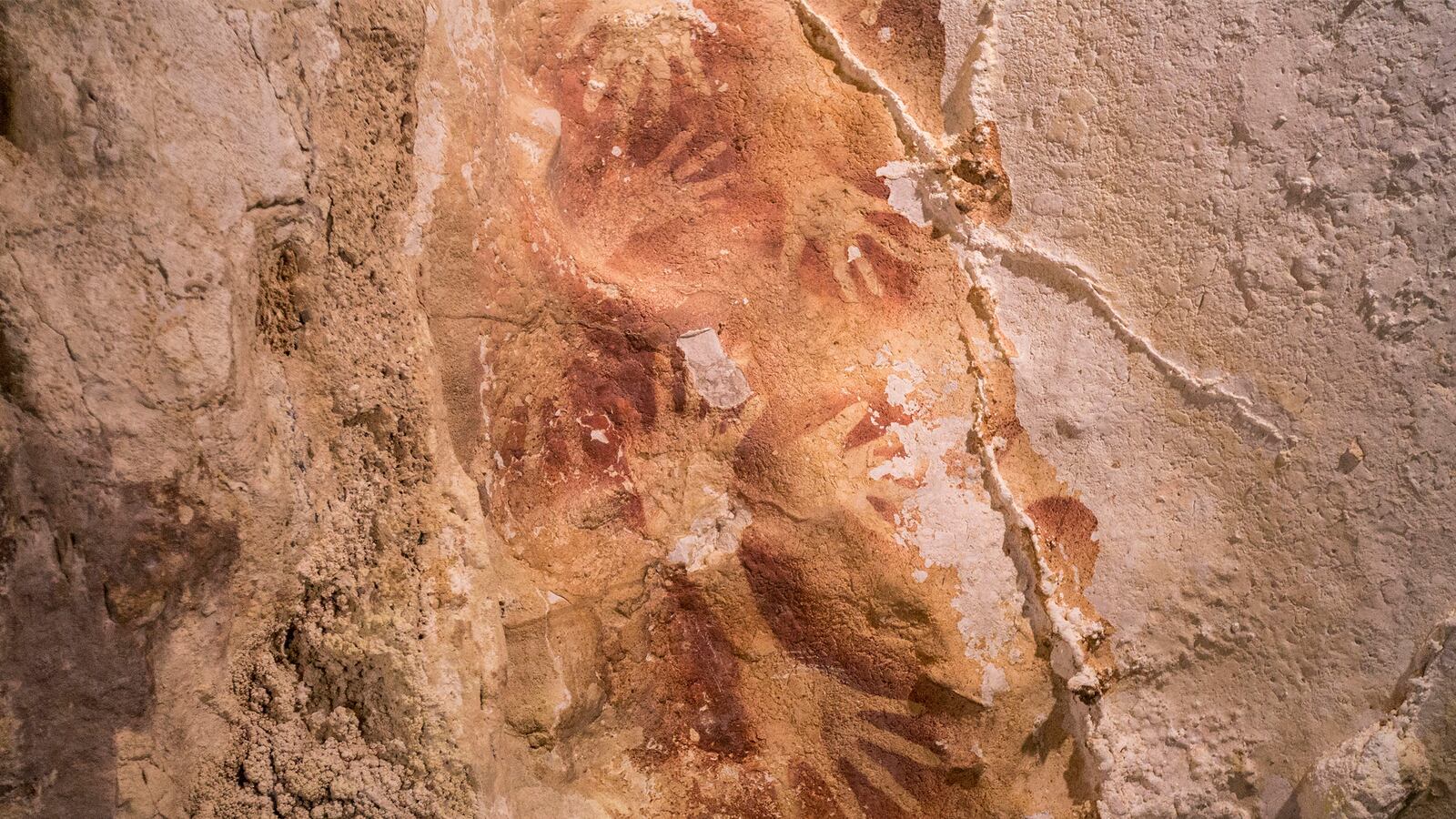It has long been held that the world’s oldest works of art reside deep within the caves of Western Europe. Outlines of hands and pictorial scenes of fabled animals that date back 35,000-40,000 years adorn the rocky interiors El Castillo in Spain and France’s Chauvet Cave.
But, as new research published in the scientific journal Nature shows, the real prize winners reside further south, in limestone caves on the tropical island of Sulawesi in Indonesia.
The existence of the images—which resemble the styles and themes found in European cave art—has been known for some time. They were discovered in the 1950s, but the idea that they were any older than 10,000 years was quickly dismissed due to the assumption that nothing beyond that time could have survived the region’s tropical climate.
That theory is now shattered. A team of Australian and Indonesian scientists used a uranium decay technique, which takes samples of the calcite buildup that thinly covers the cave’s walls, to determine the official age. The dating process produced an astounding age of roughly 39,900 years old for the silhouetted handprints. The pigment underneath would be slightly older, leading these cave works to trump Europe’s oldest known hand stencil paintings inside Spain’s El Castillo cave, which ambiguously hold the title at the ripe age of 40,800.
However, that wasn’t the only—or best—discovery. A drawing of what was deemed a “deer pig” was also sent through the uranium decay ringer. Its age: at least 35,400 years old, making it “among the earliest dated figurative depiction worldwide, if not the earliest one,” according to Nature. It surpasses the paintings of horses and rhinoceros from the Chauvet Cave in France by 400 years.
So, why is this discovery so surprising?
It removes Europe as the epicenter of creativity in a post-African world. Those who migrated to Asia were also indulging in art at the same time, possibly earlier. “It allows us to move away from the view that Europe was special,” Maxime Aubert, an Australian archeologist and leader of the team, told Nature. “There was some idea that early Europeans were more aware of themselves and their surroundings. Now we can say that’s not true.”
The debate now holds whether or not these early beings—both in Europe and Asia—learned their craft independently or if painting was passed down from ancestors who migrated directly from Africa.
“Our discovery on Sulawesi shows that cave art was made at opposite ends of the Pleistocene Eurasian world at about the same time, suggesting these practices have deeper origins, perhaps in Africa before our species left this continent and spread across the globe,” Aubert continued. Although there is currently no known figurative art from before Homo sapiens expansion into Europe and Asia, it doesn’t mean it’s not possible.
Eric Delson, a paleoanthropologist at Lehman College of the City University of New York told the New York Times that he prefers the idea that art developed far before the migration due to the fact that “many of the cultural features once thought to have developed in western Eurasia in fact occurred far earlier in Africa.”
The recent revelation opens the door to many more discoveries in human development. “When modern humans colonized Sulawesi at least 50,000 years ago as a precursor to reaching New Guinea and Australia,” Chris Stringer, head of human origins at the Natural History Museum in London, told the Guardian, “they were probably already producing these kinds of depictions. I predict that even older examples of cave art will be discovered on Sulawesi, and in mainland Asia, and ultimately in our African homeland dating to more than 60,000 years ago.”






